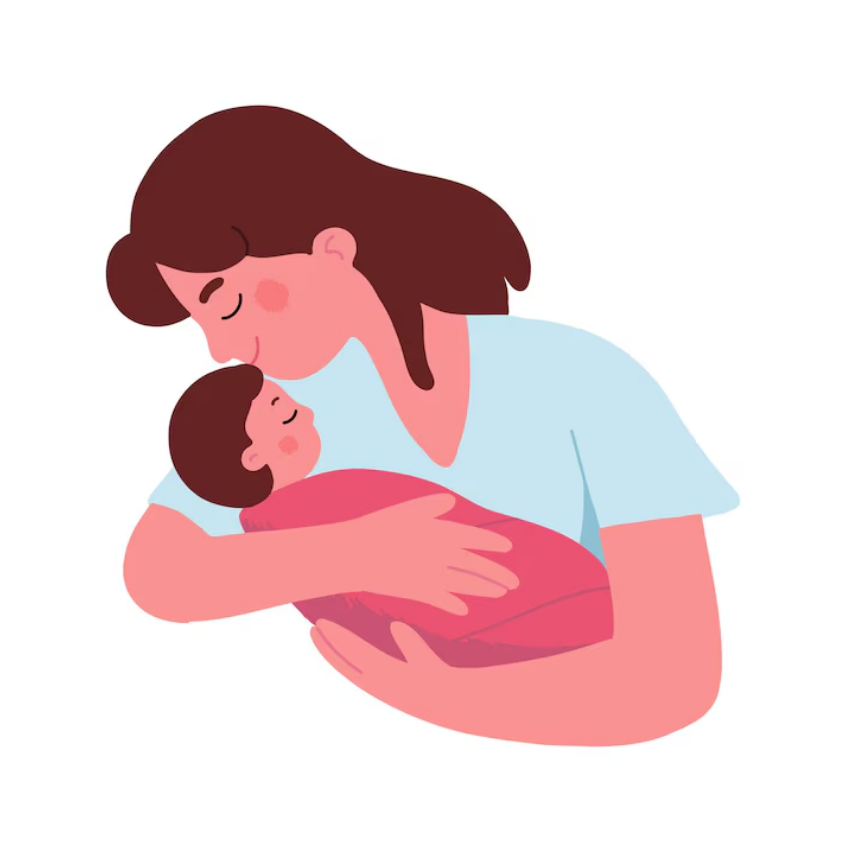
Mother and Baby Skin-to-Skin Contact: Benefits for New Mothers
Skin-to-skin contact is when a newborn is placed directly on the mother's bare chest soon after birth. It may seem like a simple moment of bonding, but it has many important benefits for both mother and baby. While people often focus on how it helps the baby, this early contact also supports the mother's physical recovery, emotional well-being, and breastfeeding journey. It is a gentle practice that makes a real difference in the days and weeks after childbirth.
Physical Recovery Benefits
One of the biggest physical benefits of skin-to-skin contact is the release of a hormone called oxytocin. This hormone helps the uterus contract after delivery, which reduces bleeding and supports the return of the uterus to its normal size. The first two hours after birth are critical for the mother's recovery, and studies have shown that early skin-to-skin contact can improve uterine tone and lower the risk of postpartum blood loss. This helps the mother heal faster and reduces the need for medical interventions in some cases.

Beyond physical healing, this contact also calms the mother's body. It helps regulate her breathing, heart rate, and stress levels. Labour and delivery can be exhausting, both physically and emotionally. When a mother holds her baby close, the release of oxytocin helps her feel more relaxed and less anxious. This calming effect is especially helpful in the early hours when the body is still adjusting, and emotions can run high.
Emotional Well-being Support
Emotionally, skin-to-skin contact can ease the transition into motherhood. Many new mothers feel overwhelmed in the first few days after giving birth. Hormone changes, sleep loss, and the responsibility of caring for a newborn can lead to feelings of anxiety or self-doubt. Skin-to-skin contact helps strengthen the emotional connection between mother and baby, building confidence and reducing stress. This bond is important for every mother, whether it's her first baby or not.
Don't Miss: How Mothers Can Find Inner Strength Through Yoga, Meditation, And Bhakti
Breastfeeding Success
Breastfeeding is another area where skin-to-skin contact shows clear benefits. The baby's natural reflex to find the breast is stronger when placed on the mother's chest, making the first feed easier. For the mother, this contact supports the release of prolactin and oxytocin, two hormones that regulate milk production and breastfeeding reflexes. When these hormones are balanced, milk supply is more likely to be steady, and the feeding process becomes less stressful. Skin-to-skin contact has also been linked to fewer breastfeeding difficulties and a more relaxed feeding experience overall.

Continuing the Practice at Home
Importantly, skin-to-skin contact is not limited to the delivery room. Mothers can continue this practice at home in the early weeks. Even short daily sessions have been shown to improve sleep, reduce mood swings, and support emotional stability. For mothers who deliver by cesarean section, skin-to-skin is still possible, often with the support of medical staff immediately after surgery.
Skin-to-skin contact is more than a comforting gesture. It offers clear physical and emotional benefits for new mothers, supports breastfeeding, and strengthens the early connection between mother and child. It also contributes to improved maternal mood and reduced stress in the early postpartum period.
This article is written by Dr Santhosh Kumar, Senior Consultant & Lead - Paediatrician and Neonatologist, Motherhood Hospitals, Banashankari, Bengaluru.
Don't Miss: Fertility and Endometriosis: 5 Surprising Insights Every Woman Should Know; Expert Shares
For more such stories, stay tuned to HerZindagi.
Image Courtesy: Freepik
Also watch this video
Herzindagi video